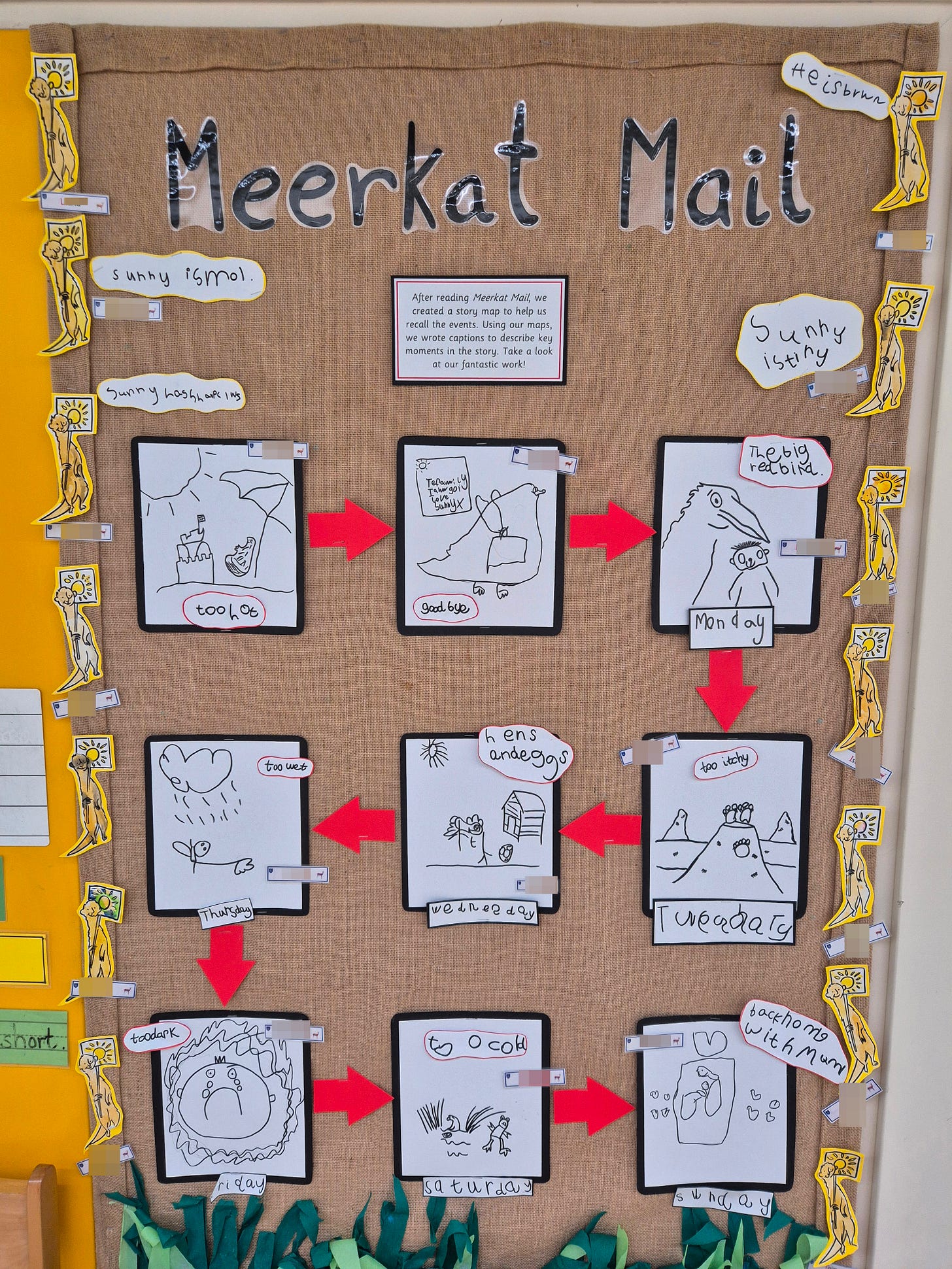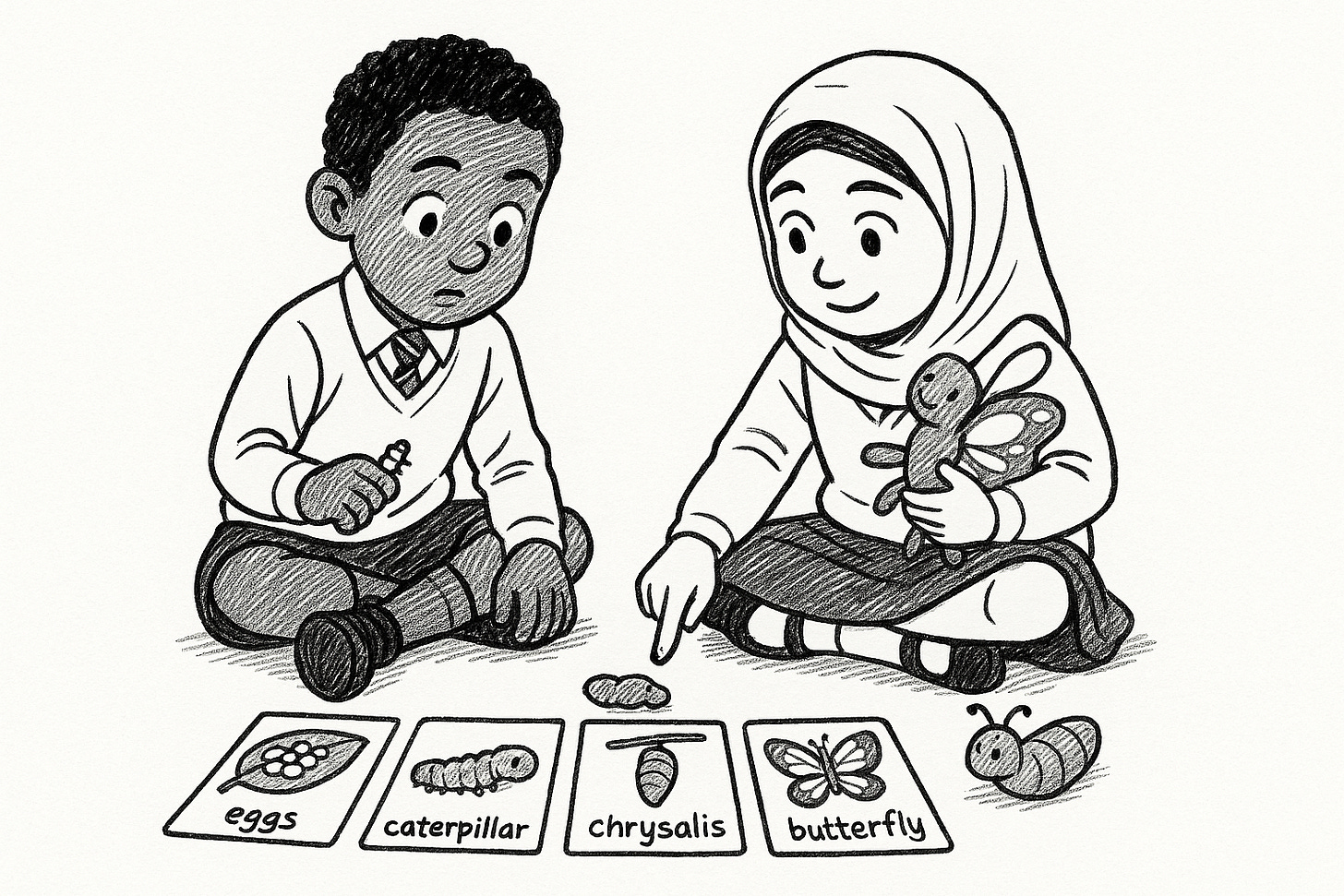Sequencing Knowledge: Designing Tasks That Help Children Think Part 5
Sequencing tasks help children understand how ideas connect and progress over time.
📚 Catch Up on the Series
Missed a part? Here’s what we’ve covered so far:
📦 Part 1: Organising Knowledge
Why organising knowledge makes learning stick — and how it helps shape what children remember.
🧱 Part 2: Selecting Task Types
Choosing the right structure to match the thinking: Compare, Sequence, Cause & Effect, Chunk.
Six powerful task examples that group ideas into meaningful mental ‘buckets’.
🏅 Part 4: Ranking and Comparing Knowledge
From Diamond 9s to Target Maps — helping children weigh, prioritise, and reason.
🔁 Part 5: Sequencing Knowledge
From timelines to swim lanes — helping children structure ideas, actions, and events so they flow and make sense
⚙️ Part 6: Cause and Effect Knowledge
From fishbone diagrams to consequence maps — helping children understand why things happen and what they lead to.
💡 The Big Idea
Sequencing is about helping pupils organise knowledge into meaningful orders, whether chronological, procedural, or conceptual. From timelines to storyboards, sequencing tasks help pupils build stronger mental models and see how ideas connect and flow.
👀 A Closer Look
Sequencing isn’t just about knowing what comes next, it’s about understanding why it comes next. These tasks help pupils build threads and paths of understanding that are logical, memorable, and transferable.
Sequencing can be used:
🧠 To explain and encode new processes, actions or plans
🔁 To embed understanding of stories, timelines, or systems
🎯 To retrieve or reconstruct learned sequences
Let’s explore six task types that support sequencing, including two from early years provision.
📅 Example Task 1: Timeline
Children place events, facts, or steps in a clear chronological order using time cues or markers. This might be used in history to show the unfolding of events or a geographical case study such as a volcanic eruption or tsunami.
✏️ Used for: Chronology, historical reasoning, concept of time
🔎 Why it works: Timelines reduce misconceptions about time spacing. They help pupils see not only what order things happened in, but how far apart or close things happened.
🔁 Example Task 2: Flow Chart
A flow chart shows how one step leads to another through directional arrows. It’s perfect for laying out a process, explaining a scientific reaction, or creating a visual representation of a narrative.
✏️ Used for: Logical progression, process explanation, narrative reasoning
🔎 Why it works: Flow charts help pupils sequence events clearly. They lower cognitive load by breaking information into manageable chunks while reinforcing structure through visual sequencing.
🔄 Example Task 3: Cycle Chart
Cycle charts help children visualise how processes repeat and loop. They’re especially useful for understanding natural cycles like the water cycle or plant life cycles, reinforcing the idea of continuity and renewal.
✏️ Used for: Repeating patterns, scientific cycles, renewal
🔎 Why it works: Pupils often see processes as linear. A cycle chart strengthens schema around repetition and change, helping children grasp more complex systems that restart or repeat over time.
🏊♀️ Example Task 4: Swim Lanes
Each lane represents a person, group or object across time, helping pupils see how things unfold in parallel. It’s ideal for tracking characters in a story, roles in a team project, or different parts of a system working together.
✏️ Used for: Parallel action, responsibility tracking, systems thinking
🔎 Why it works: Swim lanes clarify how different elements operate side by side and how they affect one another. They support comparative thinking, sequencing, and a deeper understanding of how roles and responsibilities interlink.
👧 Practical FS/KS1 Examples
Sequencing isn’t reserved for Primary. In Early Years, it’s about developing early storytelling, ordering events, and sequencing ideas.
📖 Example Task 5: Story Map Retell
Set up a small world or continuous provision area with story prompts and a sequencing strip or storyboard frame. Choose a familiar class text (like Meerkat Mail) and provide simple picture cards or drawing templates linked to the story’s key events. Children can sequence the story themselves using arrows, pegs, or velcro to map out what happened.
Encourage oral retelling alongside their sequencing with prompts like: “What happened before this?” or “Can you tell me what happens next?”
🔎 Supports:
Communication and Language – Listening, Attention and Understanding (ELG)
Literacy – Comprehension (ELG)
Creating and Thinking Critically (COEL)
🧠 This task helps embed story structure and sequencing vocabulary (“first,” “then,” “next,” “finally”), while building narrative memory through meaningful retell and play. Children become more confident in connecting and ordering story elements over time.
🦋 Example Task 6: Life Cycle of a Butterfly (Enhanced Provision)
Create an interactive area with props, plastic models or story cards showing each stage: egg, caterpillar, chrysalis, butterfly. Children can act out the process, re-sequence the cards, or use soft toys to retell the cycle. Add texts and sentence stems like “First…” or “Next…” to support storytelling.
Ask open questions: “What would happen if we took away the chrysalis stage?” or “Why does the butterfly come last?”
🔎 Supports:
Understanding the World – The Natural World (ELG)
Expressive Arts and Design – Being Imaginative and Expressive (ELG)
Creating and Thinking Critically (COEL)
🧠 This task blends imaginative play with scientific understanding and develops narrative sequencing through hands-on retelling and repetition.
🧭 Wrapping It Up
Sequencing goes beyond ordering — it helps children understand the structure of ideas, actions, and events.
It supports comprehension in contexts like scientific processes or narrative story arcs.
Sequencing tasks build coherent mental models that aid understanding and memory.
Breaking processes into clear, meaningful steps improves encoding, recall, and application.
Visual formats like timelines, flow charts, cycle charts, and swim lanes offer structured ways of thinking.
📥 Download the Free Task Design Toolkit
Want to use these examples in your classroom or share them with your team?
I’ve created a downloadable Task Design Toolkit, including:
✅ 6 task examples in each pack
✅ Practical ideas for making each task active and embodied
✅ Extension and scaffolding suggestions for all learners
🚀 What’s Next?
In Part 6, we’ll move on to Cause and Effect tasks, where children don’t just sequence what happened, but begin to explore why it happened. From science investigations to historical consequences, we’ll dive into strategies that help pupils make connections, draw conclusions, and strengthen causal reasoning.
📚 Sources & Inspiration
This post draws on the brilliant work of educators, researchers, and generous online communities. While the tasks and examples have been adapted and developed for the primary classroom, many of the underlying ideas are grounded in the work of the following individuals and groups:
🧠 Books & Research
David Goodwin & Oliver Caviglioli – Organise Ideas: Thinking by Hand, Extending the Mind
🌐 Online Educators & Threads
James Fitzpatrick (@mrfitzhist) – for insightful history task design and questioning
Karl McGrath (@MRMICT) – for ideas around task design and retrieval challenges
Oliver Caviglioli (@olicav) – for dual coding and visual explanation frameworks
💬 Communities
Primary Task Design Facebook Group (led by @MRMICT) — a highly active space where educators generously share practical task structures and thinking routines
📝 More from WAGOLL Teaching
The Ultimate List of Books for Research-Informed Teachers ➡️ We’ve pulled together The Ultimate List of Books for Research-Informed Teachers - a handpicked collection of must-reads to boost your practice, challenge your thinking, and keep you at the cutting edge of education.
Exploring Success Criteria - Make Them Dynamic and Accessible ➡️ By presenting success criteria in a more dynamic and relevant medium, meaning can be made, and links can be made to prior learning. Success criteria need to be made domain, subject, and age group specific.
Retrieval Practice: 7 Activities That Work in Primary ➡️ A handy list of retrieval activities for Primary children
In a bit,
Coops 😎









